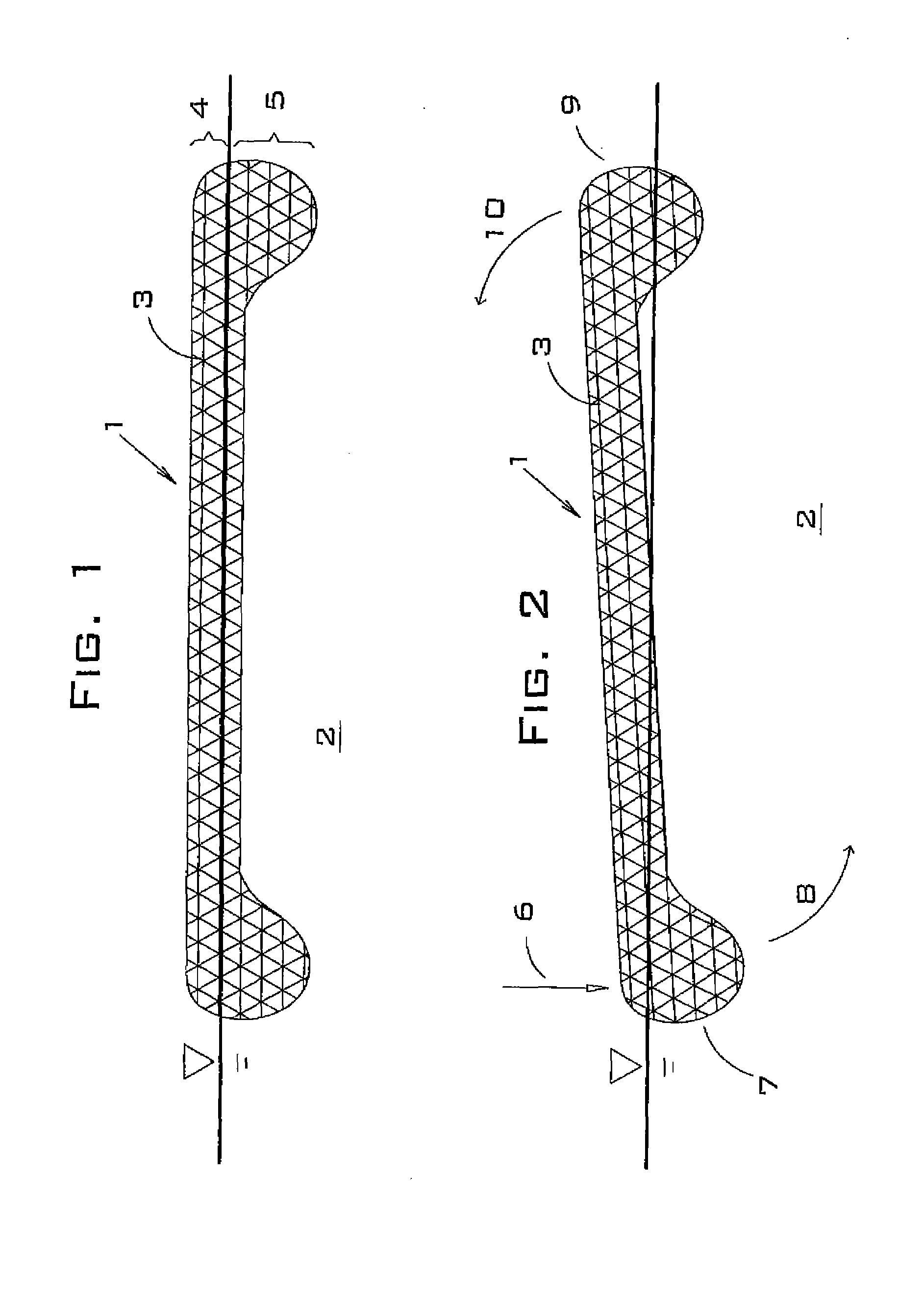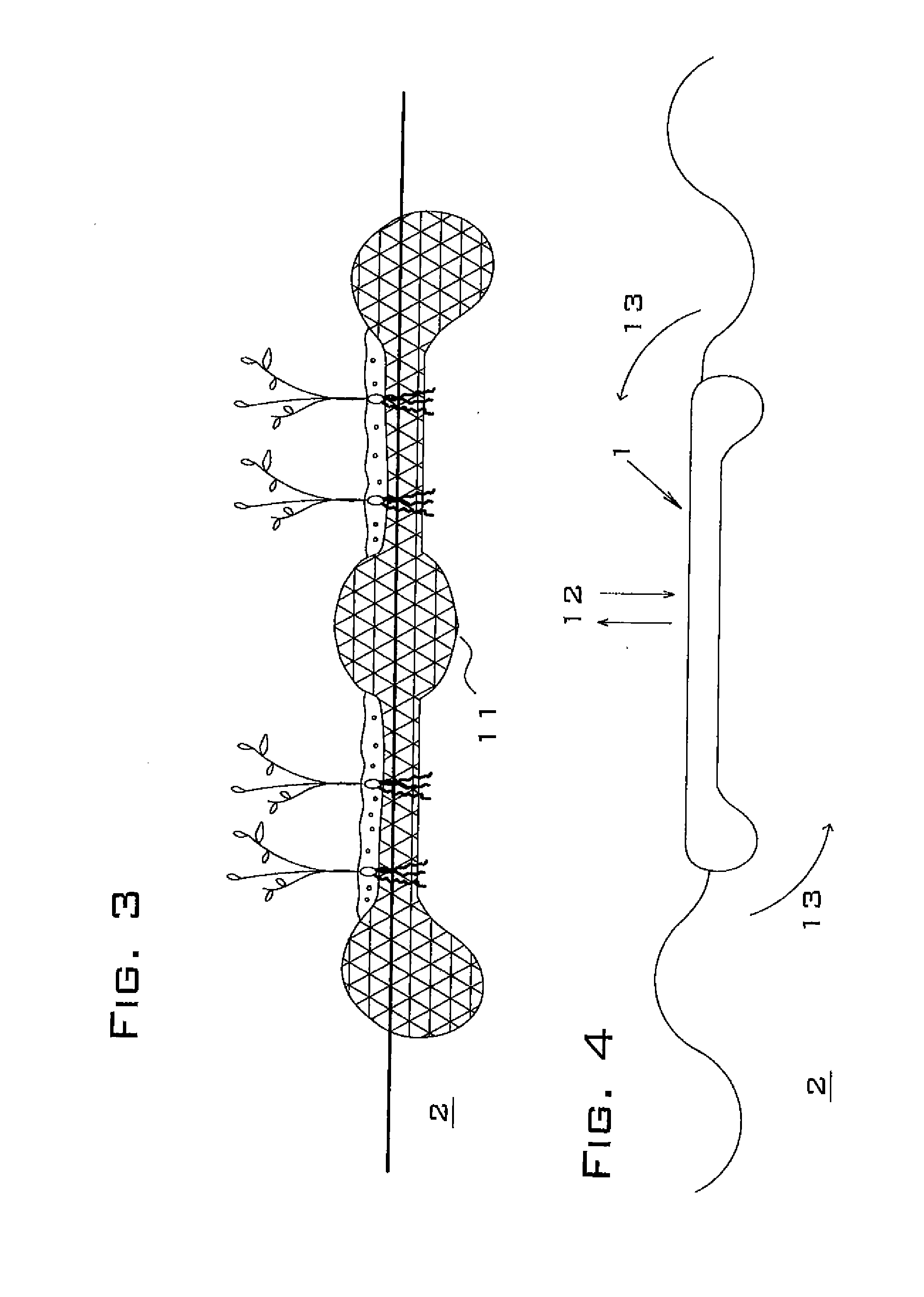Low-cost microbial habitat for water quality enhancement and wave mitigation
a microbial habitat and low-cost technology, applied in water cleaning, special-purpose vessels, vessel parts, etc., can solve the problems of increasing the cost of manufacture and deployment, inherently unstable background art floating platforms, and excessive bob and rock of existing-art floating platforms, so as to improve the stability and reduce the cost of materials. , the effect of less material mass
- Summary
- Abstract
- Description
- Claims
- Application Information
AI Technical Summary
Benefits of technology
Problems solved by technology
Method used
Image
Examples
Embodiment Construction
[0096]Referring to FIG. 1, a preferred embodiment of floating island 1 is shown floating in a normal position within a body of water 2. In this embodiment, structure 1 is substantially round in shape when viewed in plan from above. This embodiment is referred to herein as the “pontoon design,” from the thickened, pontoon-like shape (in cross section) of the section of the body of floating island 1 at its perimeter. FIG. 2 is a side cross-section view of the same embodiment, shown when the invention is being subjected to a temporary perimeter load.
[0097]As shown in FIG. 1, floating island 1 is comprised of a water-porous and water-permeable matrix material 3. Portion 4 of floating island 1 is above water line, and portion 5 is below the waterline. The pore spaces of matrix 3 within the above-waterline portion 4 are filled with air, and the pore spaces of matrix 3 that are within the below-waterline portion 5 are filled with water. In this embodiment, structure 1 floats because the fi...
PUM
 Login to View More
Login to View More Abstract
Description
Claims
Application Information
 Login to View More
Login to View More - R&D
- Intellectual Property
- Life Sciences
- Materials
- Tech Scout
- Unparalleled Data Quality
- Higher Quality Content
- 60% Fewer Hallucinations
Browse by: Latest US Patents, China's latest patents, Technical Efficacy Thesaurus, Application Domain, Technology Topic, Popular Technical Reports.
© 2025 PatSnap. All rights reserved.Legal|Privacy policy|Modern Slavery Act Transparency Statement|Sitemap|About US| Contact US: help@patsnap.com



